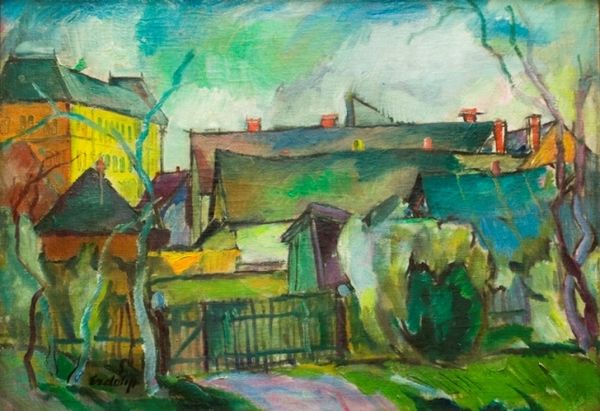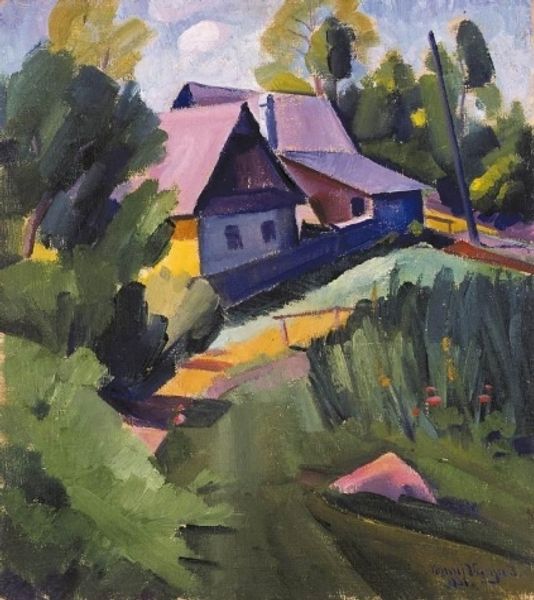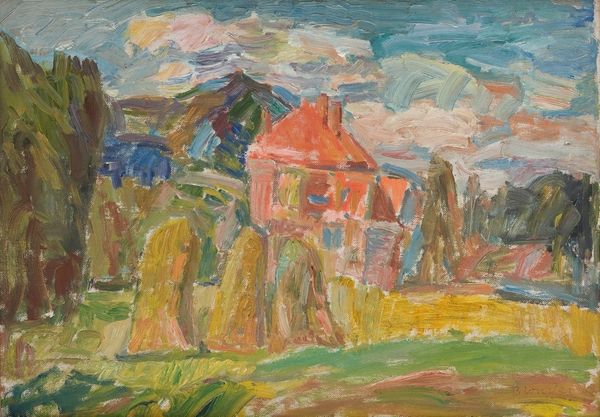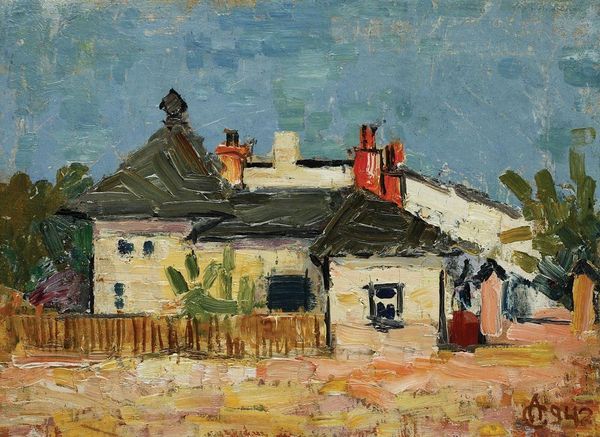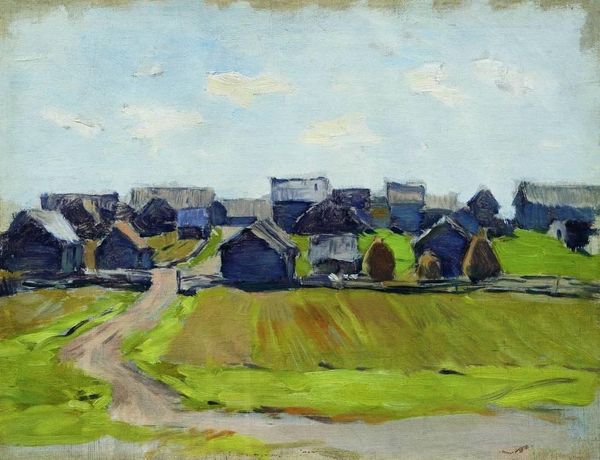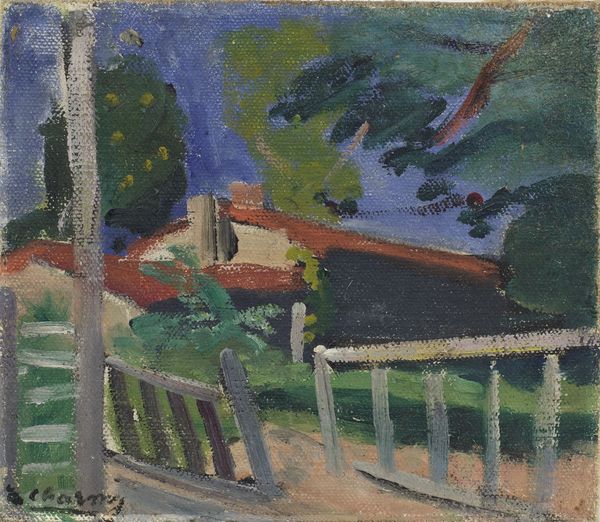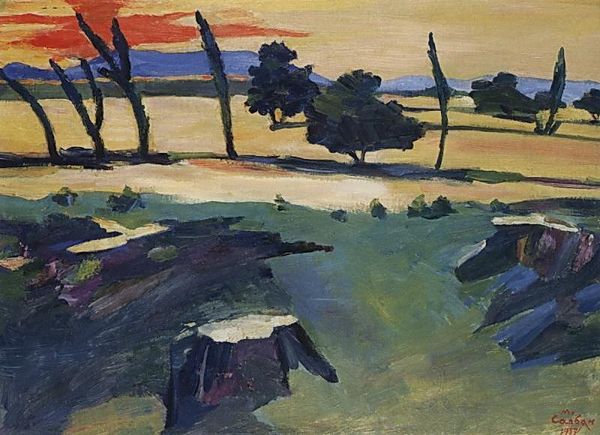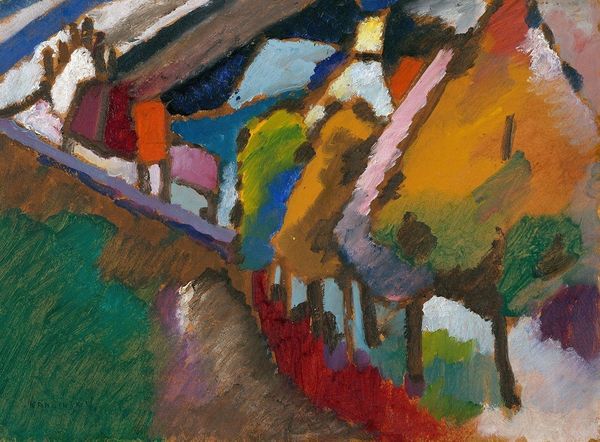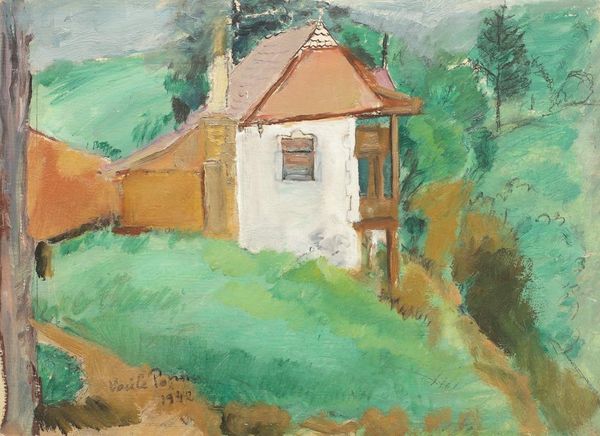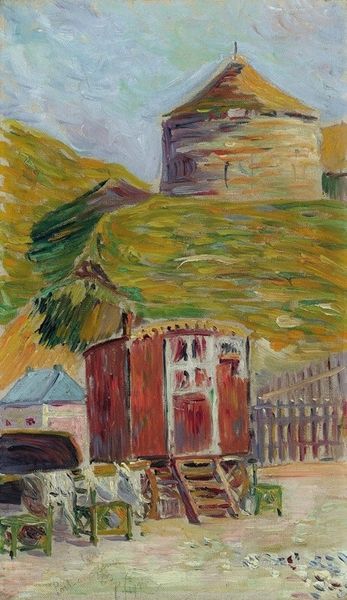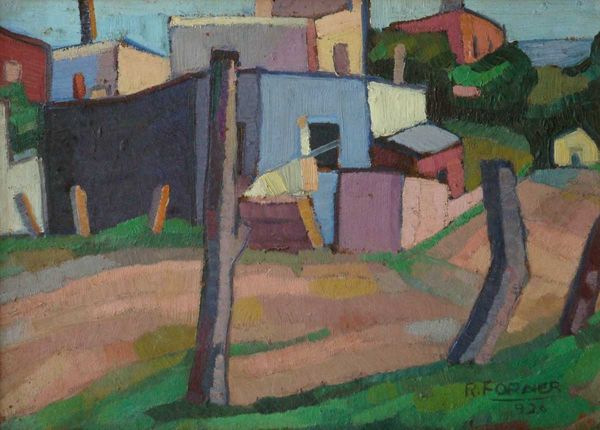
Copyright: Public domain US
Curator: Pyotr Konchalovsky’s "Summer Landscape," painted in 1920, is a fascinating example of his work straddling realism and the Russian avant-garde. It’s an oil painting, and when you stand before it, you immediately get a sense of… domesticity, maybe? Editor: My first impression is a sort of muted joy. Despite the somber colors, there's something optimistic about the upward gaze toward the buildings. Almost a hopeful perspective on urban growth. Curator: Yes, muted joy. I like that. It's almost as though the artist is inviting us into a hidden corner of his world. Konchalovsky does that, I find, doesn't he? Offers you these almost…vulnerable glimpses into how he sees things. The brushstrokes themselves seem hesitant, full of questions. Editor: Definitely. And it makes me think about the tumultuous period of its creation—the Russian Revolution, the ensuing civil war. How did artists negotiate these intense sociopolitical shifts? To me, "Summer Landscape" can be read as a quest for normalcy in the face of upheaval. A quiet assertion of the everyday. Curator: That resonates deeply. And it's not just about subject matter, is it? But about Konchalovsky's entire artistic ethos. The way he grounds us in reality, but with that dash of…dare I say whimsy? You see hints of Impressionism peeking through the architectural precision, right? Editor: Precisely! This interplay reflects a bigger struggle within Russian art at the time, oscillating between avant-garde abstraction and a need to represent the world—real, yet transformed by revolution. How to balance history and the promise of a future? Konchalovsky teeters between these, leaving us with something compellingly unresolved. Curator: Unresolved, but also beautifully personal, right? He wasn't just reflecting a political moment; he was working through it, on the canvas. This work becomes a visual diary, and, like all great diaries, it invites us to ask the really big, tender questions about life. Editor: Absolutely, and in doing so, "Summer Landscape" resists becoming a mere historical artifact. Instead, it invites conversations across time about identity, memory, and the persistent human desire for home in even the most shifting landscapes. It encourages dialogue, not closure. Curator: A powerful point. This little "Summer Landscape" it is a reminder to keep looking, keep questioning, and, of course, to keep dreaming.
Comments
No comments
Be the first to comment and join the conversation on the ultimate creative platform.

